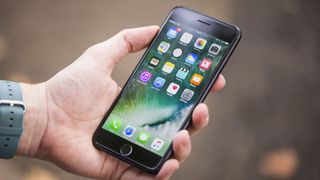Touchscreen technology can limit the spread of bacteria
Useful in hospitals and sewage plants

Touchscreens have come on leaps and bounds since the first smartphones emerged almost twenty years ago. But now biologists are discovering that the rapid progress made in developing the technology could have benefits elsewhere too.
A team from the Karolinska Institute in Stockholm has been experimenting with the conducting plastics used in smartphone screens. They've published a paper showing that by manipulating electrons on the surface of the plastic, bacteria can be tricked into growing more or less.
Here's how it works. When bacteria land somewhere where the conditions are right, they multiply into a thick film known as a "biofilm" that covers the surface. These exist all over the place - including your body - but can pose a danger in places like hospitals where they can cause infections.
The team, led by Agneta Richter-Dahlfors, found however that conducting plastics can encourage or discourage that growth. “When the bacteria land on a surface full of electrons, they cannot replicate”, she said.
“They have nowhere to deposit their own electrons which they need to do in order to respire.”
Opposite voltage
The opposite is also true. If the opposite voltage is applied then the bacteria can spread more rapidly.
“With the electrons being continually sucked out of the surface, bacteria could continually deposit their own electrons, giving them the energy they needed to grow quickly,” said Richter-Dahlfors.
Get daily insight, inspiration and deals in your inbox
Get the hottest deals available in your inbox plus news, reviews, opinion, analysis and more from the TechRadar team.
The next step is to test whether this principle can be used to develop cheap coatings for medical instruments that inhibit the spread of pathogens.
“To begin with, we can coat medical devices with this material to make them more resistant to colonisation by bacteria”, says Professor Richter-Dahlfors.
“However, if we look to industries like wastewater management that need a lot of beneficial biofilms to create clean water, we can produce surfaces that will promote biofilm production”, she said.
The full details of the technology were published in the journal NPJ Biofilms and Microbiomes.
Most Popular


